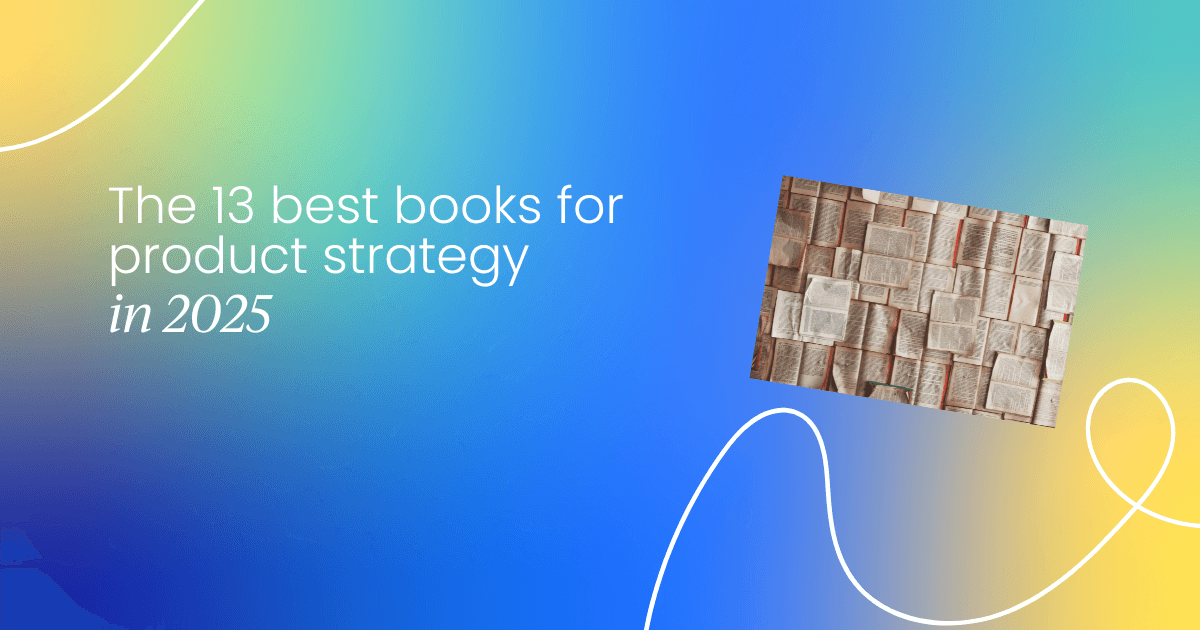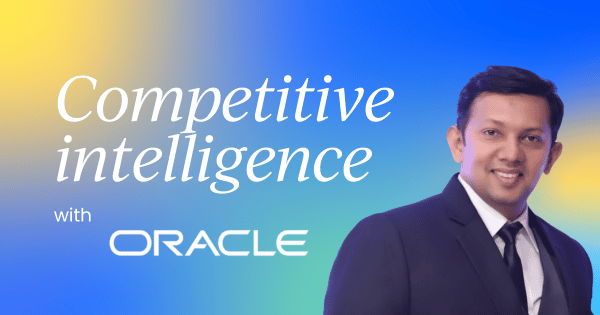Today’s markets are crowded, fast-moving, and shaped as much by your competitors’ choices as your own.
From product fitment and comprehensiveness, to pricing and value proposition, many facets of product strategy are strongly influenced by competitive intelligence (CI).
CI is as much a tool in product continuous innovation as it is in go-to-market strategies. CI isn’t about espionage (despite the title), it’s about staying informed, interpreting signals, and making sharper product decisions.
Add a touch of Game Theory to the mix, and now you're not just reacting – you’re anticipating.
1. Understanding competitive intelligence in product strategy
CI is the disciplined process of gathering, analyzing, and applying information about competitors, market trends, and customer sentiment to shape strategic decisions.
It spans from watching product releases to interpreting hiring trends, pricing shifts, and even patent filings. Think of it as tuning into the industry’s heartbeat.
Competitive intelligence is the art (and science) of understanding your market rivals – not just who they are, but what they’re building, why they’re building it, and how it could impact your next move.
CI plus informed decision-making allows companies to create opportunities or reposition themselves in the market.
In B2B SaaS, this includes monitoring:
- Quarterly and annual reports, along with key insights around geography expansions, performance of product lines, hits/misses, and industries under focus
- Product launches, roadmap commitments, and feature changes
- Pricing and packaging shifts
- Positioning and messaging
- Customer reviews, case studies, and job postings
- M&A and funding rounds
- New offices, hiring patterns, job openings, and more.

Here’s an example from industry: In November 2016, Slack issued a press release – “Dear Microsoft, Wow. Big news! Congratulations on today’s announcements. We’re genuinely excited to have some competition.”
This was on Microsoft’s launch of Teams; Slack didn’t just watch – they prepared.
Their CI teams picked up hiring patterns and integrations that hinted at a Teams launch. Slack responded with a full-page NYT ad welcoming Microsoft to the party, signaling confidence while pushing accelerated feature rollouts. That wasn’t just PR; it was CI-informed strategy.
This relates to game theory’s famous exercise Prisoner’s Dilemma, which identifies the type of game in different situations. Short-term games without a brighter future will often lead to all players defecting and reducing prices or taking a conservative approach.
On the other hand, long-term games will lead competitors to cooperate and bring more value to the markets they serve. A “short-term game” involves bundling smaller/niche products/functionalities with limited usecases within other premier applications.
For example, Netflix didn’t price content traditionally like individual DVDs (with trailing demand over time) sold by Blockbuster; they instead bundled all the content with a single price.
This led to a stronger value proposition. A “long-term game” could be a looming recession, such as the pandemic, where mindlessly dropping prices could’ve disrupted the market in the long run.

2. Integrating CI into the product lifecycle
CI that no one uses is just art. CI shouldn’t be a nice-to-have for product development; it should be ingrained in its lifecycle. From ideation to GTM, competitive insights help you decide whether to differentiate, imitate, or avoid a feature.
CI isn’t a quarterly report – it’s a continuous thread across the product lifecycle. It informs:
- Ideation: What problems are underserved in the market?
- MVP definition: Which features are truly differentiators?
- Prioritization: Where do we leapfrog vs. catch up?
- GTM strategy: What messaging resonates in a competitive landscape?
In just a few weeks in 2024, several press releases announcing generative AI features in SaaS solutions were issued - coincidence? Probably not. Especially considering many of these orgs only had semi-working prototypes and make-shift demos.
This is an example of CI integrating with the product lifecycle – allowing PMs to update GTM approaches, LLM partnerships, and transform product roadmaps with agility.
Strategic moves like feature adoption or omission can be analyzed through Game Theory’s “prisoner’s dilemma” or “tit-for-tat” frameworks. Do you respond to every competitor move or choose your battles?

3. Tools, teams, and techniques
Tapping into structured and unstructured data sources, including text, image, videos, deep learning, neural networks, website traffic, ad-based keywords, quarterly/annual reports, press releases, product launches, pricing changes, partner collaborations, incidents/accidents, podcasts, and more, is impossible through human efforts alone.
CI isn’t just someone on the product team Googling competitors.
Mature B2B companies invest in systems and cross-functional collaboration. Tools like Crayon, Klue, SimilarWeb, and BuiltWith automate tracking competitor changes, while Sales Navigator and G2Crowd provide market signals.
But tools are only as good as the humans behind them.
Product managers, marketers, sales enablement, solution consultants, and customer success – all contribute to and consume CI.
This is a two-way street, as every individual has a unique perspective on competition from sales to PMs, so in addition to market intelligence and knowledge, first-hand perspectives from teams should be collated and presented contextually.
CI requires a dedicated team or embedded analysts within product, working closely with sales, marketing, and customer success. The key is synthesis – turning raw intel into actionable insights.

4. Ethical boundaries and common pitfalls
Let’s get this straight: CI is not espionage. No hacking, no fake identities, no deceit. The data is often public – you just need to know where and how to look.
Some common CI mistakes include:
- Analysis paralysis: Too much data, no insight.
- Siloed CI: Insights don’t reach decision-makers and relevant stakeholders.
- Confirmation bias: Seeing only what validates your strategy.
Remember Zune? Microsoft’s Zune misread Apple’s iPod dominance, assuming price and features would win. They ignored the power of Apple’s ecosystem and brand loyalty. They fell into the trap of data without insight – and a million-dollar write-off.
Through the lens of game theory, Microsoft made a "simultaneous-move" without anticipating Apple’s next step – a classic misread in strategic gameplay.
5. Making CI actionable: From intel to impact
The true value of CI is in its application.
Competitive intelligence is the process of collecting, analyzing, and using information about competitors, market trends, and other external factors to aid in informed decision-making.
Insights must drive product bets, messaging shifts, and roadmap changes. This often happens in cycles – monitor, interpret, act, observe impact, and repeat. That means:
- Adjusting product roadmaps based on emerging gaps
- Refining pricing models when competitors shift tiers
- Equipping sales with updated objection-handling and positioning
- Enhancing onboarding when competitors weaken on time-to-value
During the pandemic, Zoom faced intense competition from Google Meet and Microsoft Teams. CI showed where competitors were gaining ground (e.g., Google bundling Meet into Workspace).
Zoom didn’t just hold their ground; they innovated with features like virtual backgrounds, immersive scenes and pumped up their developer platform – enhancing stickiness, brand differentiation, and an explosion of developer apps.
Consider "first-mover advantage" vs "fast follower" dynamics. CI helps calculate when it’s worth leading with a new capability versus waiting to see how the market responds and iterating better.

6. Measuring the impact of competitive intelligence
If CI is a strategic muscle, how do you know it’s working?
Some key KPIs to track CI’s impact include:
- Sales enablement usage of battle cards and positioning briefs
- Win/loss ratio in competitive deals
- Roadmap velocity vs. market shifts
- Feature adoption from CI-inspired additions
Identifying what to act on, what to ignore, and what to watch is the difference between staying relevant, cutting-through-the-fluff, and allowing your competitors to shape the market for you.
Conclusion
Competitive intelligence isn’t a luxury – it’s a strategic necessity.
In B2B SaaS, where decisions are long-tail and switching costs are high, understanding the moves of your rivals helps you uncover blind-spots and build defensible, differentiated products.
Game Theory reminds us it’s not about dominating every match – it’s about knowing when to cooperate, when to compete, and when to stay silent.



 Follow us on LinkedIn
Follow us on LinkedIn







